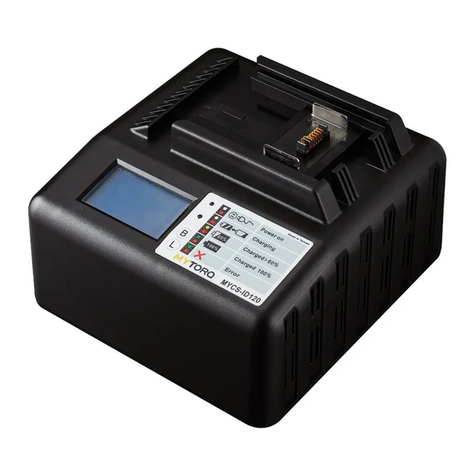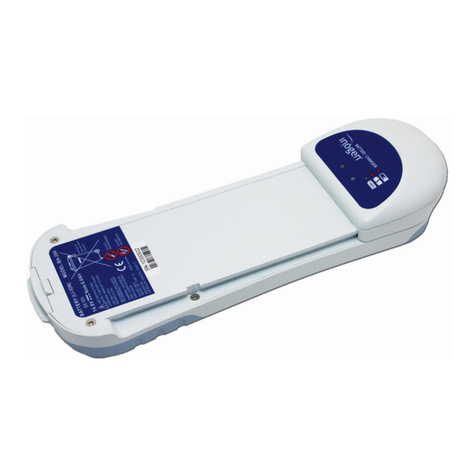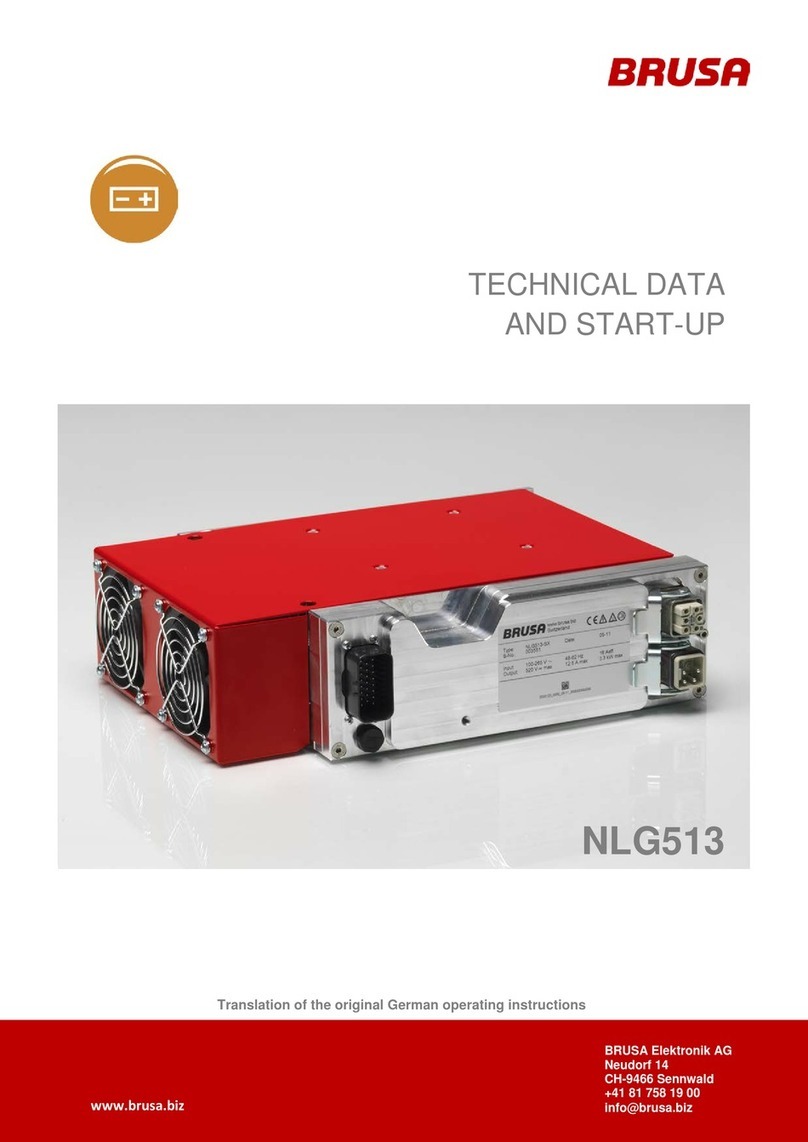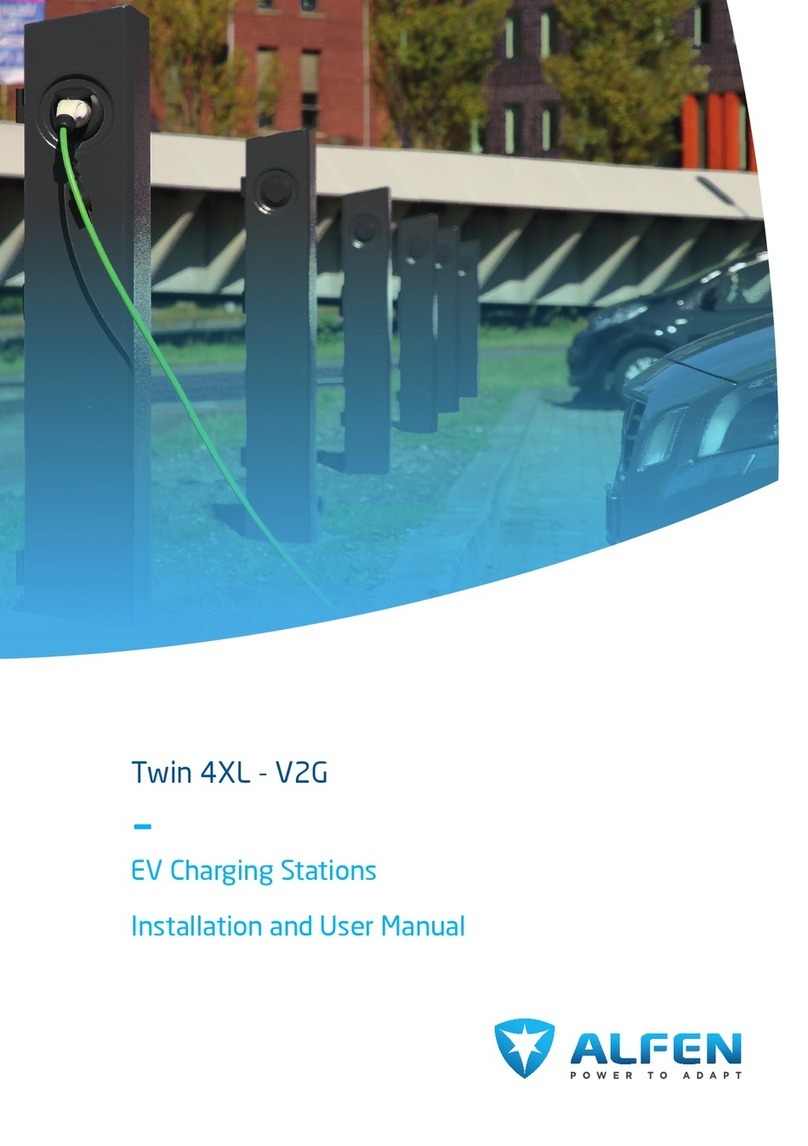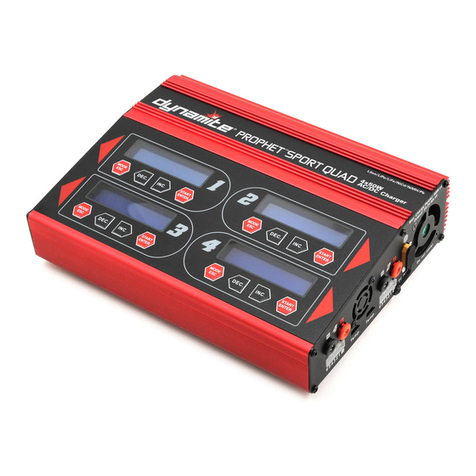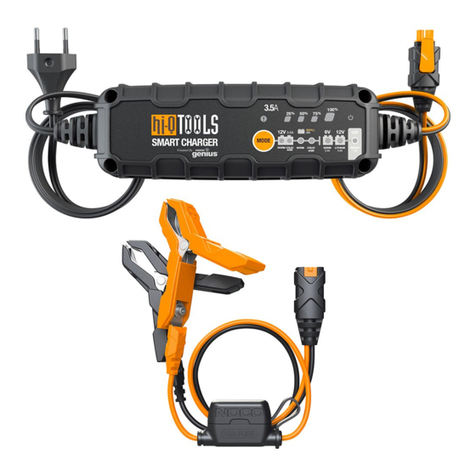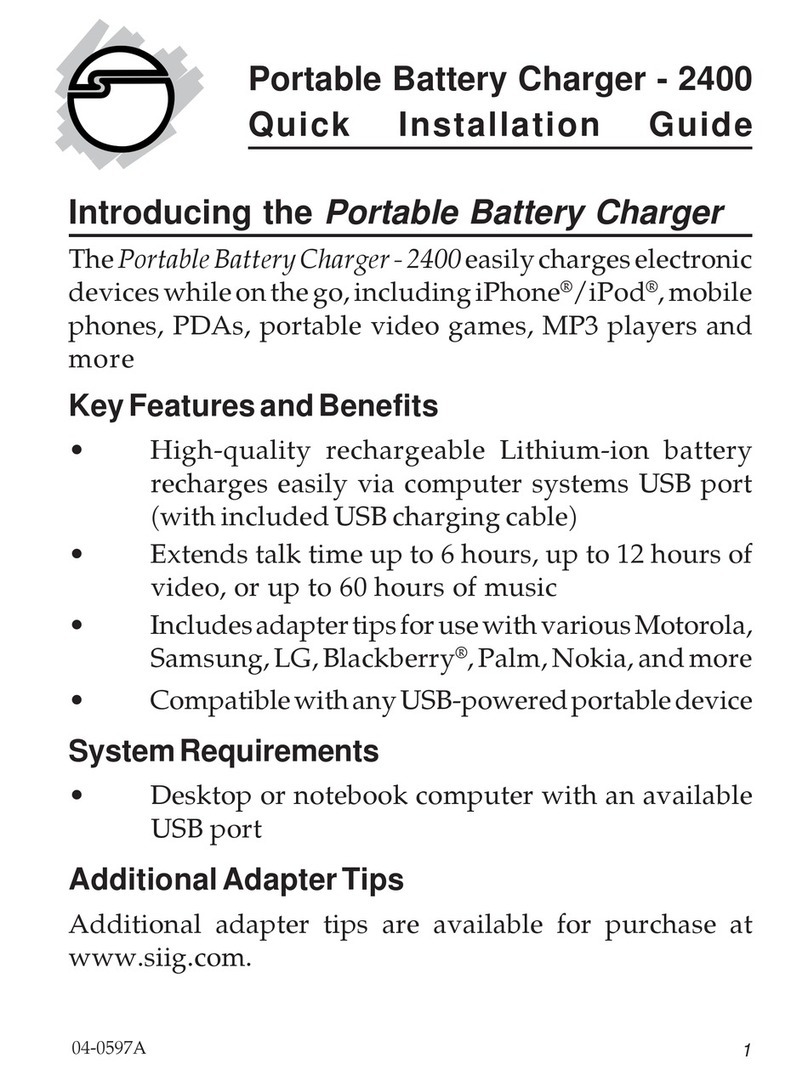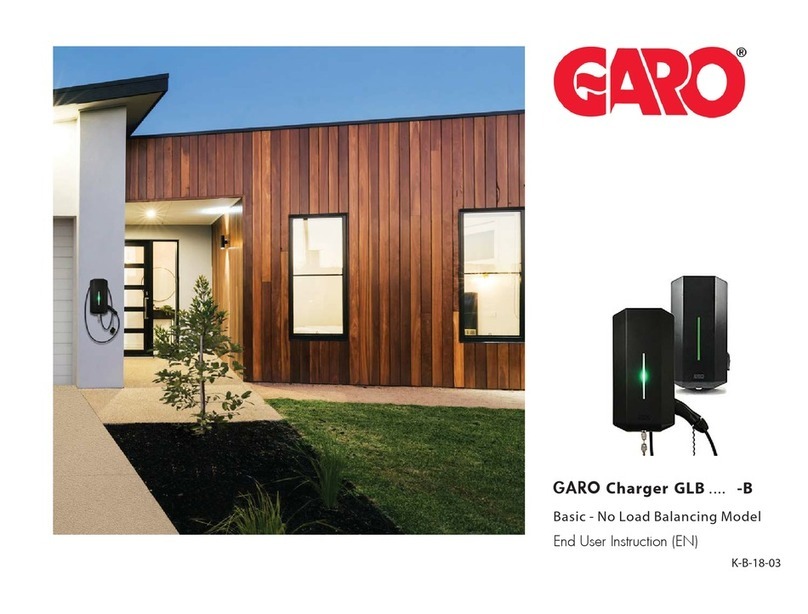AREBOS AR-HE-SB800 User manual

User’s manual – AREBOS starting aid& battery charger
1
Starting aid & battery charger
AR-HE-SB800
Please follow all security measures in this user’s manual to ensure a secure use.
Thank you for trusting AREBOS.

User’s manual – AREBOS starting aid& battery charger
2
List of contents
1. Safety instructions.................................................3
1.1 Explanation of the symbols.........................................................3
1.2 General safety instructions.........................................................4
1.3 Electrical residual hazards ..........................................................5
2. Technical data .......................................................5
3. Commissioning ......................................................6
3.1 Before the charge.......................................................................6
3.2 Charging function .......................................................................7
3.3 Battery charging time .................................................................7
3.4 Quick charging ............................................................................7
3.5 Starting aid .................................................................................7
4. Proper use .............................................................8
4.1 Attention with Plb batteries .......................................................8
4.2 Step-by-step instructions............................................................8
5. Storage and maintenance ......................................8
6. Bug fixing...............................................................9
7. Disposal instruction .............................................10
7.1 Disposal of the packaging .........................................................10
7.2 Disposal of waste equipment ...................................................10
7.3 Meaning of the “dustbin”.........................................................10

User’s manual – AREBOS starting aid& battery charger
3
Please read and safe these instructions. Read through this user’s manual carefully before using this
product. Protect yourself and others by observing all safety information, warnings and cautions.
Failure to comply with instructions could result in personal injury and/or damage to product or
property. Please retain instructions for future reference.
1.Safety instructions
1.1 Explanation of the symbols
By means of a CE marking, it can be recognized that a product complies with the
legal requirements of European legal standards and therefore may be traded
within the European Community.
This product must not be disposed of with household waste!
This product has been tested and certified by TÜV Süd.
Products marked with this symbol comply with the applicable safety and quality
requirements of consumers.
The product has been tested for features such as equipment, performance, ease of
use and ergonomics.
Warning! Read the safety instructions carefully. Failure to follow the safety
precautions could result in serious injury or damage. Keep the operating
instructions in a safe place.
Note: Pull the mains plug!
Take special care when using this article.
Warning of electrical voltage!

User’s manual – AREBOS starting aid& battery charger
4
1.2 General safety instructions
•This battery charger may only be used by persons over the age of 16. An exception is made
for use as a young person if it is used in the course of vocational training to achieve the skill
under the supervision of an instructor.
•The charging current supplied with the battery increases according to the characteristic W
curve - see DIN 41774 standard.
•The battery housing has protection class IP 20 and is protected against indirect contacts by
an earthing cable, as it is intended for class 1 devices.
•Check that the available mains voltage corresponds to the voltage indicated on the label on
the front of the battery charger. Check that the outlet is earthed.
•The battery charger may only be connected to power sources that have a neutral conductor
with an earth connection.
•While charging batteries, the charger produces explosive gases. Avoid the formation of
flames and sparks. DO NOT SMOKE!
•Only use the battery charger in enclosed spaces and ensure that they are ventilated. DO NOT
EXPOSE IT TO RAIN OR SNOW!
•Disconnect the mains cable before connecting or disconnecting the charging cables from the
battery.
•This battery charger contains parts such as switches, etc. that can cause sparks. Therefore,
when using the charger in a garage or similar, place it in a suitable housing.
•Place the battery charger on a solid base. Wheeled models must be installed in a vertical
position. Never use the battery charger in a car or under the hood.
•Place the battery charger so that it is always well ventilated. Never cover the charger!
•Follow the vehicle manufacturer's instructions carefully before using the battery charger. To
ensure that the protection against indirect contacts is connected to a suitable grounded plug.
Repairs or maintenance from inside the battery charger can only be carried out by qualified
technicians. Only replace the power cord with an original part.
•Do not use the battery charger for batteries that cannot be recharged.
•Connect models supplied without plugs only to an outlet with the appropriate capacity for
the value of the fuse specified in the Technical Data Table.
•Attention: Only operate with residual current circuit breaker (FI)!
•Do not use power tools or machine tools in humid or wet environments. Ensure sufficient
lighting. Do not expose electrical tools to rain or high humidity. Do not switch on electrical
tools in an environment with flammable liquids or gases.
•Do not allow strangers to enter the machine.
•After removing the packaging, check that the machine and all its parts are in perfect
condition.
•Always disconnect the plug before adjusting or servicing the machine. Do not connect the
charger to the power supply until all adjustments have been made and the terminals
correctly connected.
•Unplug the power cord completely and lay it out so that the terminals cannot touch each
other.
•If necessary, extend the power cord with an extension cord, making sure that the cross-
section of the cord is the same as that of the power cord; do not use cables with a smaller
cross-section.
•The terminal clamps, the terminals and the upper surface of the battery must be kept clean;
if necessary, clean the battery terminals with a rotating brush; this allows good electrical
contact and better charging efficiency.
•Never reverse the polarity of the terminals: black (-) and red (+).
•The charging voltage of the battery charger must be equal to the nominal voltage indicated

User’s manual – AREBOS starting aid& battery charger
5
on the battery. It corresponds to the number of battery cells multiplied by two (3 cells = 6 V;
6 cells = 12 V; 12 cells = 24 V).
•Install the charging unit securely and ensure that the airflow through the appropriate
openings is not obstructed.
1.3 Electrical residual hazards
Direct electrical contact:
•A defective cable or plug can lead to electric shock!
Always have defective cables or plugs replaced by a specialist. Only use the device at a
connection with residual current circuit breaker (FI).
Indirect electrical contact:
•Injuries caused by live parts when electrical components are open or defective. Always
disconnect the mains plug during maintenance work. Operate only at the RCD switch.
Inappropriate local lighting:
•Poor lighting represents a high safety risk. Always ensure adequate lighting when working
with the device.
2.Technical data
Model
AR-HE-SB800
AC
230 V; 50/60 Hz
Charging voltage
12 V/24 V
Charge current effective
50 A
Start current effective
300 A
Capacity
40 –800 Ah
Weight
21,3 kg
Dimensions (L x W x H) in cm
32,5 x 31,5 x 68,5
Protection class
IP 20
Fuse
1 x 110 A

User’s manual – AREBOS starting aid& battery charger
6
3. Commissioning
3.1 Before the charge
Number of parts
Designation
1
12 V Connection
2
Ground connection
3
24 V connection
4
Fuse
5
Ammeter
6
Step switch charge/start
•ATTENTION: The mains plug must be disconnected before changing or adjusting the battery
charger.
•The battery charger has an overload protection fuse.
•Important: Replacing fuses that do not match those of the charger may result in damage to
property or personal injury. Fuses may only be replaced when the mains cable is pulled!
•Remove the caps of the battery charger (if provided) so that produced gas can escape.
•All safety and protective devices must be properly installed and in place before the machine
can be switched on.
•Starting attempts on vehicles with discharged or damaged batteries are prohibited, as this
would damage the unit.
•Attempts to start the battery in the "charging position" instead of "jump starting" can
damage the ammeter and trigger the overload protection.
•Before operating the main switch, make sure that the charger is properly connected.
•Do not use the charger until you have carefully read the operating instructions.
•Observe all safety instructions in the manual.

User’s manual – AREBOS starting aid& battery charger
7
3.2 Charging function
•Connect the charger to the battery to be charged.
•Always connect the black pole cable to the negative pole first, then to the positive pole.
•Attention! Disconnect the battery completely from the vehicle for charging.
•Always set the charger to the lowest charge level.
•Now plug in the mains plug and adjust the charging levels upwards until a charging current is
displayed which corresponds to approx. 10 % of the battery capacity.
•The charging levels can be increased as the charging current falls.
•Disconnect the battery no later than 3-5 hours after completion of charging.
•The charging current display does not return to zero when charging is complete.
Note: The ammeter will move to the left during charging and not to the right. If the indicator needle
is to the left of the figure "zero", charging is complete.
3.3 Battery charging time
•The charging time always depends on the battery status (almost charged, half charged or
completely discharged).
•To "refresh" a battery 2-4 hours are sufficient. It takes 8-10 hours to fully charge the battery.
•Attention! A maximum charging time of 10 hours should not be exceeded.
3.4 Quick charging
•On levels 4-6, quick charging is possible, but this must be limited by the timer:
1. connect the battery
2. set the charging stage either to 4-6 or read the charging current from the ammeter.
Set the timer to the desired charging time (max. 60 min.).
3.5 Starting aid
•Watch your step! Overvoltages can occur during the starting process, which can damage the
on-board electronics of your vehicle. Please discuss this with your vehicle specialist.
•Connect the battery as described in chapter Charging procedure and leave it connected to

User’s manual – AREBOS starting aid& battery charger
8
the vehicle!
•The vehicle should always be started with 2 persons.
•The first person operates the start switch on the charger. The second person starts the
ignition process immediately.
•As soon as the vehicle has started, interrupt the starting process immediately, max. 9-10 sec.
•After each unsuccessful start attempt, please wait approx. 5 minutes until the unit has cooled
down.
•Tip: If you precharge the battery for 10-15 minutes, the battery needs considerably less
starting current.
•Attention: If the maximum starting time of 10 seconds is exceeded, the fuses may blow or
the vehicle may be damaged! In addition, the pole terminals must not touch each other!
4. Proper use
•Start and battery charger for charging, quick charging and starting vehicles. Mobile through
wheels. Optimally suited for charging batteries for petrol and diesel engines, motorcycles,
boats etc.
4.1 Attention with Plb batteries
•Batteries connected to a vehicle will damage the on-board electronics if they are started for
longer than 7-10 seconds. Therefore only use lead-acid batteries.
4.2 Step-by-step instructions
Charge
1. connect the battery charger
2. set charging function
3. switch on the battery charger
4. connect the mains cable
5. battery is charging (max. 10 hours)
Start
1. connect battery charger
2. set the start function
3. connect the mains cable
4. switch on the battery charger, then
immediately start the vehicle
As soon as the vehicle has started, interrupt the
starting process immediately and switch off and
disconnect the battery charger.
5. Storage and maintenance
•Attention: Disconnect the mains plug before carrying out any work on the device!
•The machine should be thoroughly cleaned if it is to be stored for a longer period of time.
•Protect the device from the effects of the weather with a plastic tarpaulin, cardboard or
similar.

User’s manual – AREBOS starting aid& battery charger
9
•Use a damp cloth to clean the plastic parts. Do not use cleaning agents, solvents or pointed
objects.
•Use a soft brush or brush to remove stuck dust from the ventilation opening and moving
parts after each use.
•Lubricate the wheels regularly!
•After each use: Remove dust from ventilation openings and moving parts.
•Regularly: Oil moving metal parts (multi-purpose oil), check all screws for tightness.
6. Bug fixing
Problem
Debugging
Overload circuit breaker.
- Connect the red terminal to the positive
terminal and the black terminal to the negative
terminal.
- Remove the contact and check the fuses.
- Set the charger to the lowest charge level.
- If the power consumption of the battery is too
high, it is recommended to have the battery
charged by a qualified electrician and then to
maintain the charge level or use a more
powerful charger while frequently using the
battery charger.
Charging current too high at start of charging.
- Pay attention to the charge current, even if it is
high after 15-20 minutes, this may mean that
the charge is not holding.
Have the battery checked by a specialist and
replaced if necessary.
Charging current too weak.
- Try setting the charge current control higher.
The ammeter pointer reaches the lowest scale
reading.
- Make sure that the mains voltage corresponds
to the intended voltage.
The ammeter does not display.
- Clean the clamps and replace the pliers.
- Have it checked by a specialist. Replace the
battery if necessary. Check that the charger
works with a perfectly charged battery.
Causes of overload.
Causes of overload
- Swap the poles when connecting the terminal
to the battery
- An accidental or indirect contact of the pliers
with each other.
- The battery is heavily or completely discharged.
- The battery is completely discharged and has a
higher capacity than the battery charger can
provide.
- The battery is damaged or defective (internal
elements short-circuited).

User’s manual – AREBOS starting aid& battery charger
10
7. Disposal instruction
7.1 Disposal of the packaging
•Please make reference to the guidelines and standards for appropriate disposal of the
packaging valid in your region. In part, the package may consist of plastic bags –watch this
respect, with special care to ensure that this is not out of the reach of children. There is a risk
of suffocation!
7.2 Disposal of waste equipment
•Equipment must be disposed of in accordance with the rules and regulations of the local
waste disposal.
7.3 Meaning of the “dustbin”
Protect our environment; electrical appliances do not belong in household
waste. Use the provided for the disposal of electrical equipment collection
points and enter your electrical and electronic equipment that you no longer
use. They help ensure that the potential effects of incorrect disposal on the
environment and human health to be avoided. So, do your part to recycle,
recycling and other forms of recovery of waste electrical and electronic
equipment. Information on where the device is disposed of, please contact your
local authorities or local Governments.
Our customer service number: +49 (0) 931-45232700
Canbolat Vertriebs GmbH • Gneisenaustraße 10-11 • 97074 Würzburg

User’s manual – AREBOS starting aid& battery charger
11
EU Declaration of Conformity
We,
Canbolat Vertriebs GmbH, Gneisenaustraße 10-11, 97074 Würzburg, Germany,
Hereby declare that the product named below, seen its design and construction as well as according
to our sales, has been complied with the relevant and basic health and safety EU-requirements.
Name of the product: Arebos starting aid & battery charger
Art. Nr.: 426055189850
Model Nr.: AR-HE-SB800
If the product has any modification not allowed by us, this declaration loses ist validity.
Tested acc. to:
EU Standard:
EN 55014-1 :2006/A2 :2011
EN 55014-2 :1997/A2 :2008
EN 61000-3-2 :2014
EN 61000-3-11 :2000
EN 60335-2-29 :2004/A2 :2010
EN 60335-1 :2012/A11 :2014
EN 62233 :2008
Date/Manufacturer Signature/Location: Würzburg, 26.07.2019
Identification of the signatory:
Korhan Canbolat, head of the company
Authorised representative for the technical documentation:
Korhan Canbolat
Office address:
Canbolat Vertriebs GmbH
Gneisenaustraße 10-11
D-97074 Würzburg
Return address can be found in the imprint: https://www.arebos.de/impressum/
VAT identification number: DE 263752326
Court of the Commercial Register is Würzburg, HRB 10082
WEEE Reg.-No. DE 61617071
Table of contents


